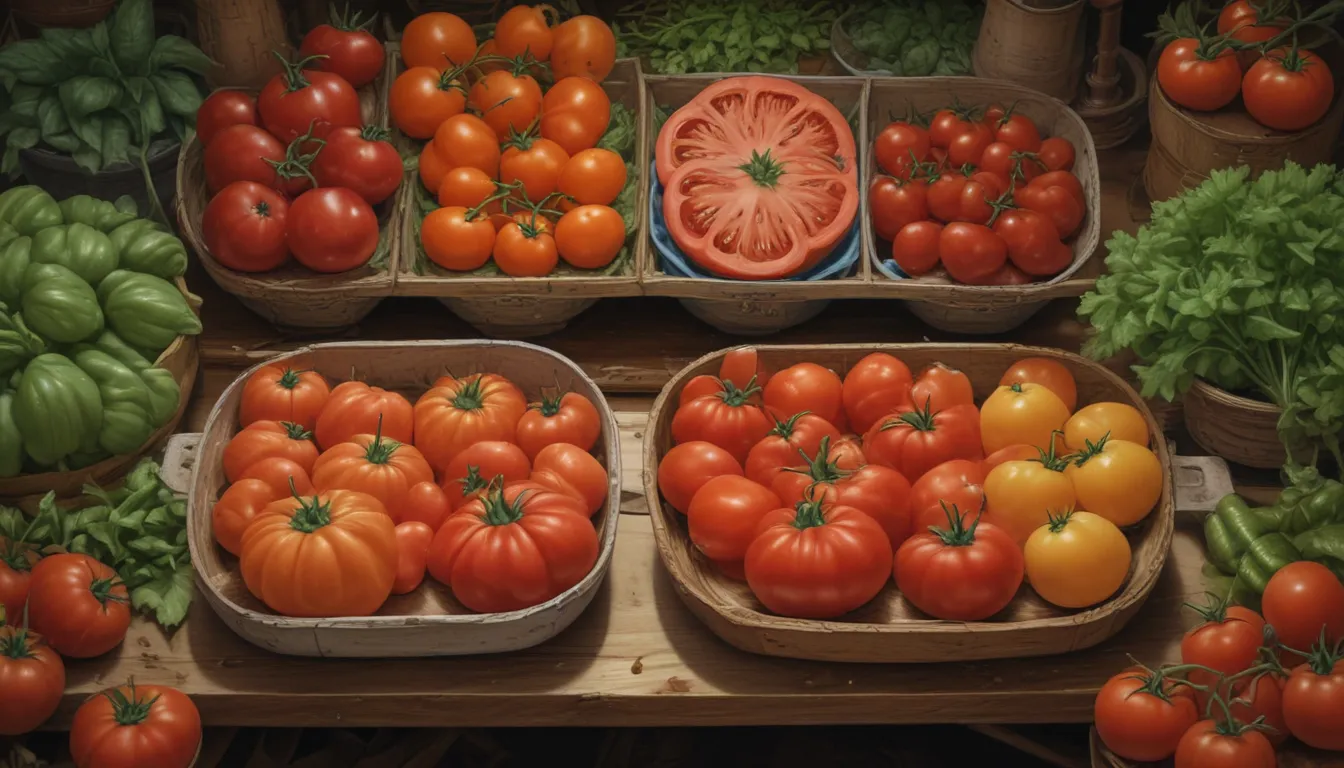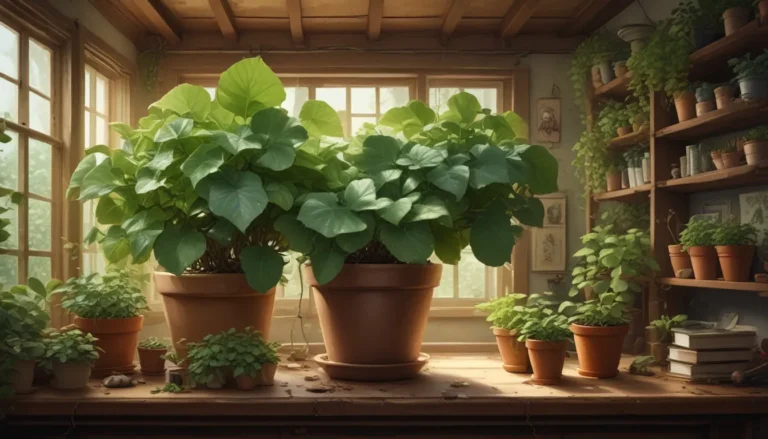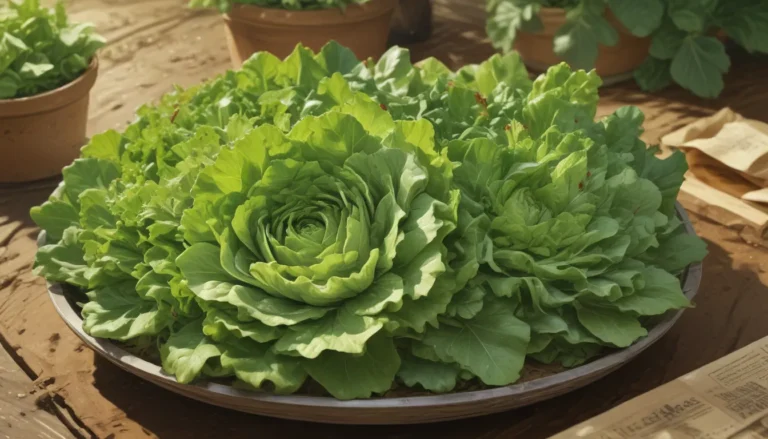Mastering Tomatoes: Understanding Determinate and Indeterminate Varieties

Are you ready to dive deep into the world of tomatoes and learn what sets determinate and indeterminate varieties apart? When it’s time to choose which tomato varieties to grow in your garden, there’s more to consider than just taste and appearance.
Understanding whether a tomato plant is determinate, indeterminate, or semi-determinate can have a significant impact on your gardening success. So, let’s break it down and explore the ins and outs of these different growth habits.
What You’ll Learn
- Growth Habit Terms
- Care for Determinate Types
- Care for Indeterminate Types
- Care for Semi-Determinate Types
Growth Habit Terms
Determining whether a tomato plant is determinate or indeterminate boils down to its growth habits. Simply put, it’s all about how the plant behaves and develops.
While tomatoes are not the only plants with these distinctions, they are among the edible crops that exhibit determinate or indeterminate growth habits. Here’s a quick breakdown of what these terms mean:
- Determinate: Plants follow a set growth pattern, reaching a specific height and stopping.
- Indeterminate: Plants continue to grow and produce fruit throughout the season.
- Semi-Determinate: These varieties continue growing throughout the season but maintain a smaller, bushier shape compared to indeterminate plants.
To illustrate these terms, consider human growth patterns. We exhibit determinate growth in our life cycles, where we reach maturity and stop getting taller. In contrast, human hair demonstrates indeterminate growth, allowing it to grow long if we choose.
To determine the growth habit of a tomato variety, check seed packets, online descriptions, or plant tags. You can also identify determinate plants by looking for flower buds at the growing tip, while indeterminate plants have leaves in that location.
Understanding these growth habits will help you provide the best care for your tomatoes and optimize your harvest.
Care for Determinate Types
Determinate tomato cultivars, also known as “bush” varieties, have compact shapes due to a self-pruning gene. These plants stop growing once they reach a certain height, focusing their energy on fruit production.
Because determinate plants have sturdy stems and stop growing foliage, they require minimal support and can be grown without stakes or cages. However, providing support can help manage the heavy fruit load at maturity.
Pruning determinate tomatoes is minimal, mainly focused on the lower part of the plant to maintain airflow and prevent disease. These varieties are ideal for container gardening and small spaces, offering early fruit maturity, perfect for canning.
Popular determinate varieties like ‘Roma’ are widely available and preferred for canned tomato products due to their simultaneous fruit ripening. These paste tomatoes are meaty and ideal for cooking, offering a concentrated harvest for canning purposes.
Care for Indeterminate Types
Indeterminate tomato cultivars, also known as vine or climbing tomatoes, keep growing until the first fall frost. These plants produce fruit continuously throughout the season, requiring support and pruning to manage their extensive growth.
Unlike determinate varieties, indeterminate plants have flower clusters along their stems, allowing them to grow taller and produce fruit gradually over an extended period. Pruning to one or two leader stems helps focus energy on fruit production and aids in disease prevention.
Indeterminate tomatoes are not suitable for container gardening due to their vigorous growth. However, they are excellent for vertical gardening and produce steady harvests for fresh eating or canning throughout the growing season.
While indeterminate varieties require more maintenance and support, they offer a constant supply of fruit and are suitable for various culinary uses. From heirlooms to cherry varieties, indeterminate plants provide a diverse range of options for home growers.
Care for Semi-Determinate Types
Semi-determinate tomatoes combine the characteristics of both determinate and indeterminate varieties, offering a middle ground for gardeners. These plants produce flower clusters at the ends of their stems but continue fruit production over an extended period, similar to indeterminate types.
While semi-determinate cultivars require support like determinate plants, they can produce fruit all summer long. These compact and sturdy plants are suitable for containers and offer an abundant early harvest, followed by continuous fruit set throughout the season.
Semi-determinate varieties are versatile, offering a range of uses from fresh eating to canning. If you’re looking for a well-behaved plant with continuous fruit production, semi-determinate tomatoes are a great choice.
Oh, Behave!
Now that you have a thorough understanding of determinate, indeterminate, and semi-determinate tomatoes, you can confidently choose the right varieties for your garden. Whether you prefer the compact growth of determinate types, the continuous harvest of indeterminate varieties, or the versatility of semi-determinates, there’s a tomato plant for every gardener.
Are you ready to embark on your tomato-growing journey? Share your thoughts and let us know which varieties you’re planning to grow in the comments below!
Whether you’re a beginner or a seasoned gardener, mastering the nuances of tomato varieties will enhance your gardening experience and maximize your harvest. Happy gardening!
Additional Resources
- How to Grow Cherry Tomatoes
- Blossom End Rot: What to Do if Your Tomatoes Rot on the Bottom
- How to Plant and Grow Tomatoes in Clay Soil
- Top 10 Reasons to Love Your Tomato
*





